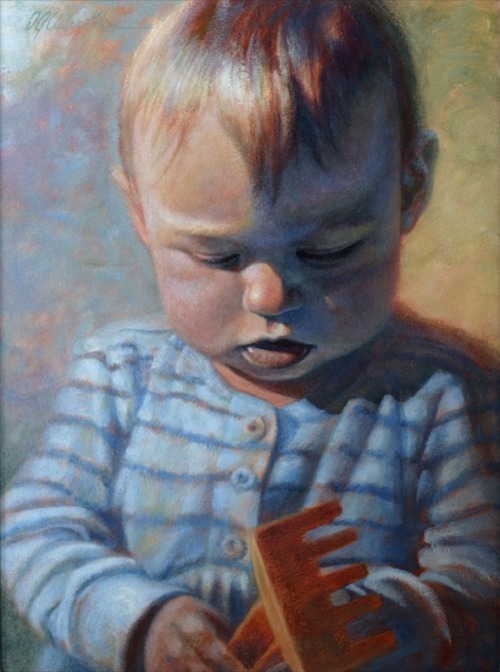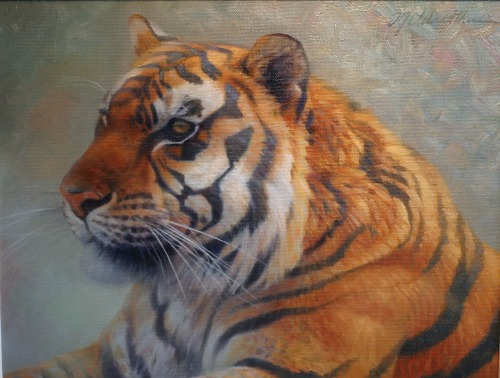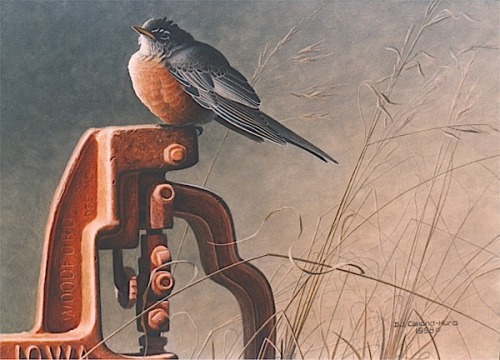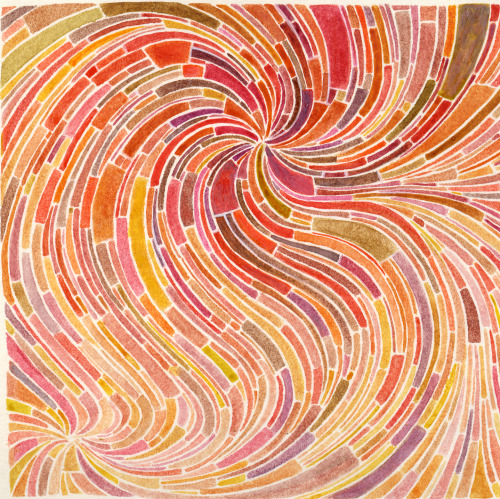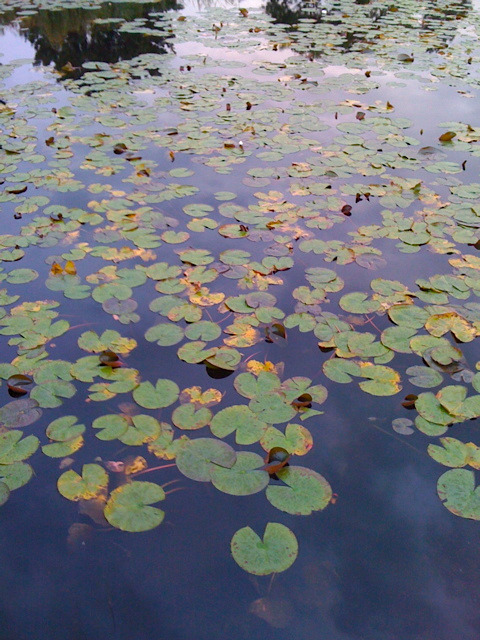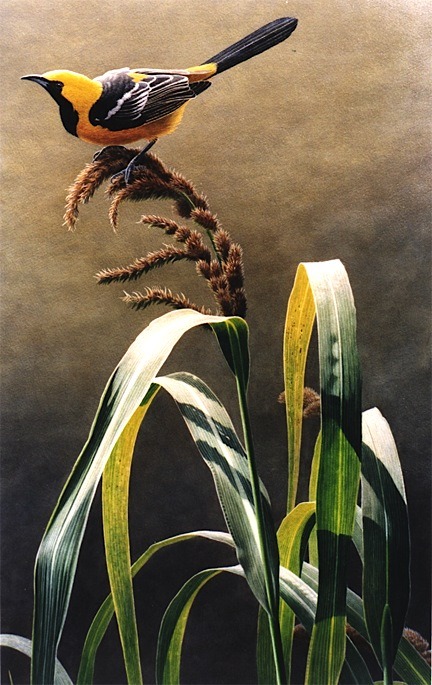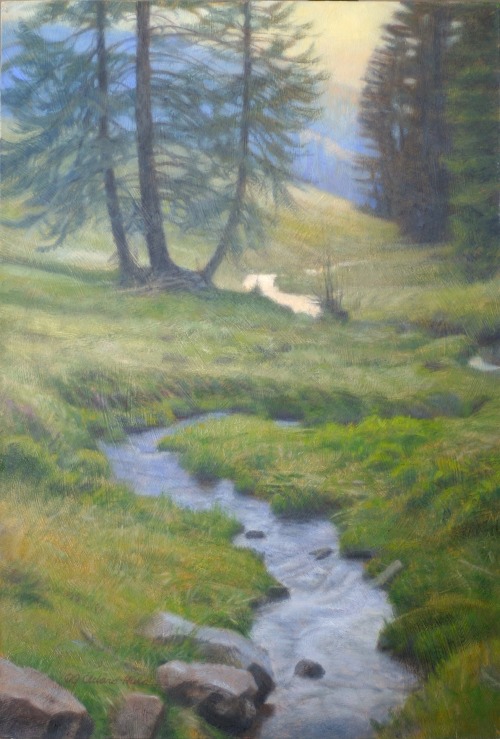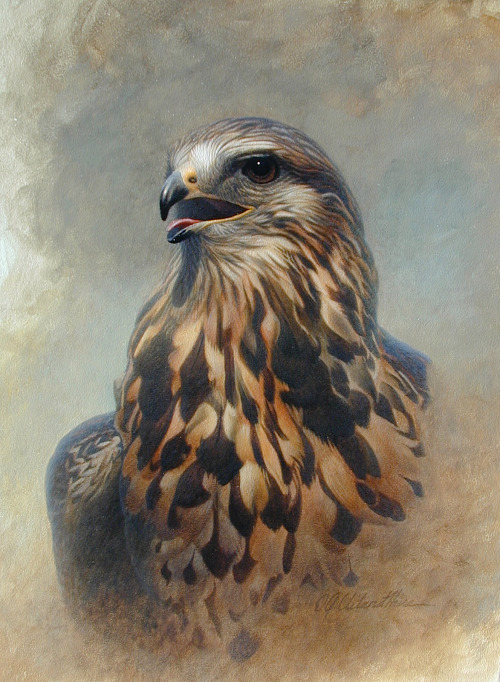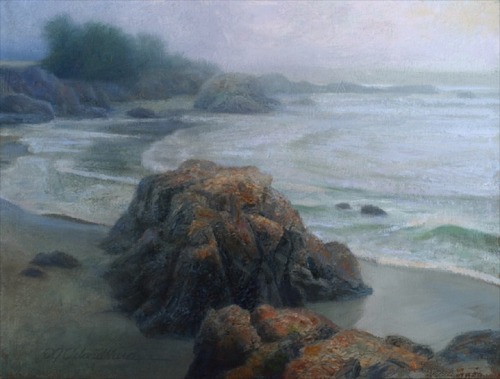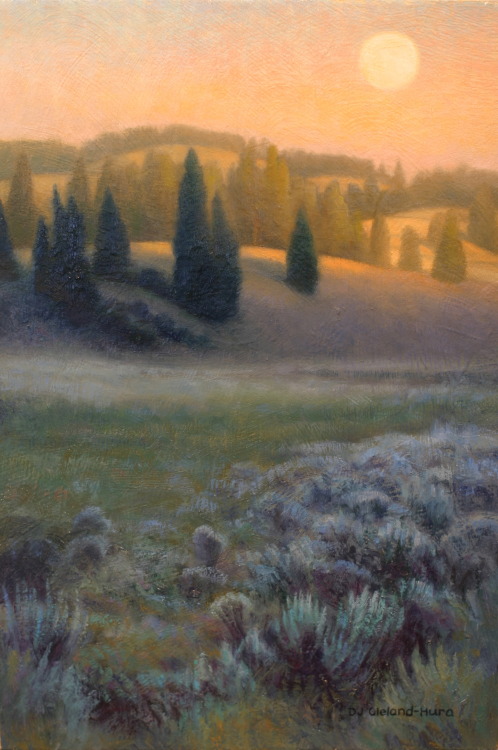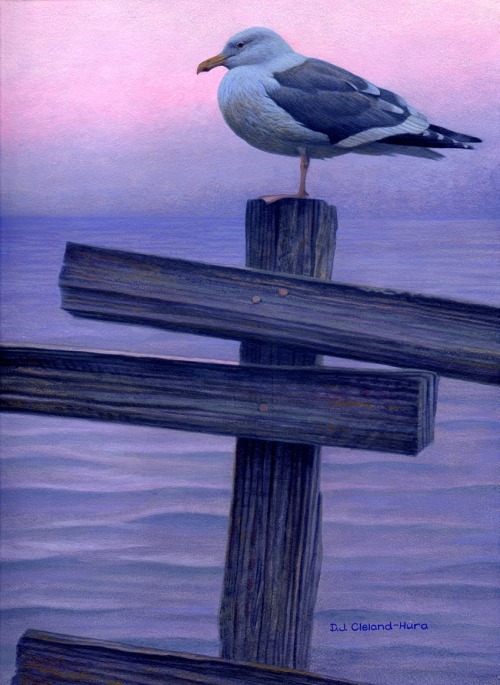From Behind the Easel: On Colour and Design
‘Into the Black Forest’ | 12" x 8” oil (sold)
The design of a painting encompasses many facets: composition,
weight, scale, movement of the eye, texture… and colour. Colour is
often overlooked or underutilized as a design element. Many artists
feel that the use of colour is simply intuitive (though intuition
certainly has value) when in fact it can be one of the most powerful
tools in conveying the artist’s intentions.
Bringing colour under
conscious control is a fantastic device for creative communication and
expression. While I’ll design a painting using my own approach to colour theory,
it’s also inspirational to see how certain colour combinations appear in
nature such as the particular green of stem and leaf complimenting a
red rose.
During a family trip to the Black Forest in Germany, we went for a
hike in an alpine meadow and came across this lovely scene of a mountain
stream carving its winding way down the slope. I was taken by the
natural harmony of the various greens in the grass enhanced by the
analogous blue of the distant hill and reflections in the water as well
as the hints of yellow in the setting sky.
For all you colour nerds/enthusiasts, these colours work well with
each other because of their close analogous placement on the colour
wheel. In other words, it is the third of the colour wheel between
yellow and blue. Despite the dominant colours being green and blue, I
feel I achieved an overall warmth in the painting through the use of
yellow.
In the design of this piece, I consciously used colour (and
saturation) to help move the eye through and around the various elements
of the landscape. For example, the use of the two blues near the top
and the bottom of the composition, move the eye back and forth between
those areas. The yellow of the sky reflected in the stream and then
played up in the bottom left hand corner creates another path for the
eye. These keep the painting interesting and gives the viewer a sense
of movement, despite the scene being idyllic and restful.























